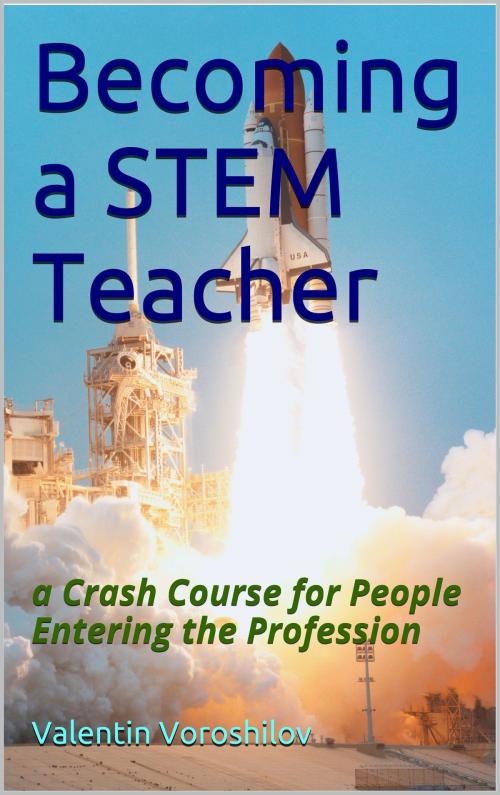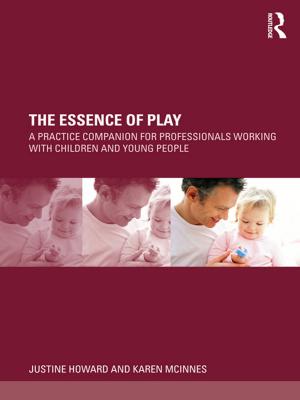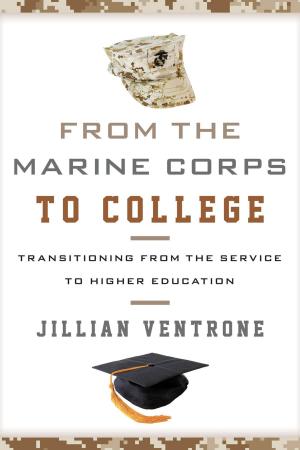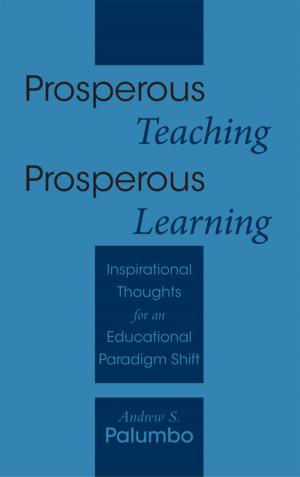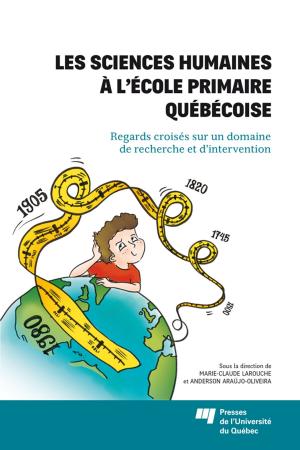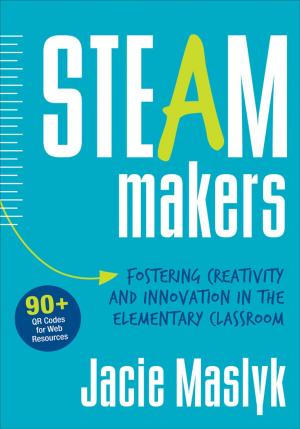Becoming a STEM Teacher: a Crash Course for People Entering the Profession
Nonfiction, Reference & Language, Education & Teaching| Author: | Valentin Voroshilov | ISBN: | 9781370402144 |
| Publisher: | Valentin Voroshilov | Publication: | September 12, 2016 |
| Imprint: | Smashwords Edition | Language: | English |
| Author: | Valentin Voroshilov |
| ISBN: | 9781370402144 |
| Publisher: | Valentin Voroshilov |
| Publication: | September 12, 2016 |
| Imprint: | Smashwords Edition |
| Language: | English |
This book is NOT a textbook on teaching strategies, it does not offer instructions on how to develop a lesson plan, or how to compose a test, or how to talk to students or their parents -there are plenty of books like that.
The mission of this book is to help young or prospective STEM teachers to get in the right state of mind, which would:
(a) help them to get a better understanding of the complicated and constantly changing world of education;
(b) let them see clearly all important processes happening in that world and the reasons for those processes to be happening, and
(c) help them to make the right decision (a.k.a. choice) when something unpredictable happens and a regular textbook has no answer to a question: “What do I do now?”.
Some people call this state of mind “a teaching philosophy”.
I do not disagree with that, but I would like to note that an individual teaching philosophy does not ever come from reading a book, it develops over years of teaching practice and regular and deep reflection on that practice.
But a good book can help to jump start the process of the development such teaching philosophy, and I assure you – this is a good book!
The first goal of this book is to present a coherent description of a personal teaching philosophy, which is based on an extensive and successful teaching, research, and consulting practices.
In every profession there is a symbiotic relationship between the professional growth of an individual and the development of his or her individual professional philosophy. High professional achievements are always a result and a source of a developed professional philosophy. However, philosophy cannot be borrowed, or transmitted, it only can be self-grown.
The personal experience of the author shows that the best instrument for self-facilitating and self-developing the own professional philosophy is an open, critical but constructive discussion with peers, who are also self-facilitating and self-developing their own professional philosophy.
Everyone who wants to “polish” his or her teaching philosophy can use this book as a “punch bag”.
The secondary purpose of this book is to present an unorthodox opinion on what is happening in the field of education and to offer several specific but outside-of-the-mainstream-view “recipes” for reforming the way education is currently being reformed (for example, redirecting all government subsidized funds designated to teacher professional development, making them available mainly through teacher professional organizations). That is why, while reading this book, sometimes the reader might feel like reading a political pamphlet, or a science paper, or listening to a person thinking out loud, or being involved into a heated discussion.
Every STEM teacher might develop his or her own teacher philosophy, but all those philosophies must have clear answer to the same questions:
- What is teaching?
- What is learning?
- What is a science, and what is a scientific way of thinking about things?
- What should a science of education tell teachers about teaching and learning?
- What is the role of education in a society and what the society should give to education and should ask from it?
- What are the most efficient ways to manage education?
I hope that this book will be useful for everyone searching for the answers to the questions above.
The first twelve chapters are based on the set of the author’s essays also available online at www.TeachOlogy.xyz.
An Appendix composed by the last five chapters is addressed mostly to science teachers, but have a content that does not require any specialized knowledge, and provides ideas and specific teaching instruments which are useful for every teacher.
This book is NOT a textbook on teaching strategies, it does not offer instructions on how to develop a lesson plan, or how to compose a test, or how to talk to students or their parents -there are plenty of books like that.
The mission of this book is to help young or prospective STEM teachers to get in the right state of mind, which would:
(a) help them to get a better understanding of the complicated and constantly changing world of education;
(b) let them see clearly all important processes happening in that world and the reasons for those processes to be happening, and
(c) help them to make the right decision (a.k.a. choice) when something unpredictable happens and a regular textbook has no answer to a question: “What do I do now?”.
Some people call this state of mind “a teaching philosophy”.
I do not disagree with that, but I would like to note that an individual teaching philosophy does not ever come from reading a book, it develops over years of teaching practice and regular and deep reflection on that practice.
But a good book can help to jump start the process of the development such teaching philosophy, and I assure you – this is a good book!
The first goal of this book is to present a coherent description of a personal teaching philosophy, which is based on an extensive and successful teaching, research, and consulting practices.
In every profession there is a symbiotic relationship between the professional growth of an individual and the development of his or her individual professional philosophy. High professional achievements are always a result and a source of a developed professional philosophy. However, philosophy cannot be borrowed, or transmitted, it only can be self-grown.
The personal experience of the author shows that the best instrument for self-facilitating and self-developing the own professional philosophy is an open, critical but constructive discussion with peers, who are also self-facilitating and self-developing their own professional philosophy.
Everyone who wants to “polish” his or her teaching philosophy can use this book as a “punch bag”.
The secondary purpose of this book is to present an unorthodox opinion on what is happening in the field of education and to offer several specific but outside-of-the-mainstream-view “recipes” for reforming the way education is currently being reformed (for example, redirecting all government subsidized funds designated to teacher professional development, making them available mainly through teacher professional organizations). That is why, while reading this book, sometimes the reader might feel like reading a political pamphlet, or a science paper, or listening to a person thinking out loud, or being involved into a heated discussion.
Every STEM teacher might develop his or her own teacher philosophy, but all those philosophies must have clear answer to the same questions:
- What is teaching?
- What is learning?
- What is a science, and what is a scientific way of thinking about things?
- What should a science of education tell teachers about teaching and learning?
- What is the role of education in a society and what the society should give to education and should ask from it?
- What are the most efficient ways to manage education?
I hope that this book will be useful for everyone searching for the answers to the questions above.
The first twelve chapters are based on the set of the author’s essays also available online at www.TeachOlogy.xyz.
An Appendix composed by the last five chapters is addressed mostly to science teachers, but have a content that does not require any specialized knowledge, and provides ideas and specific teaching instruments which are useful for every teacher.
